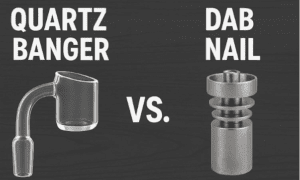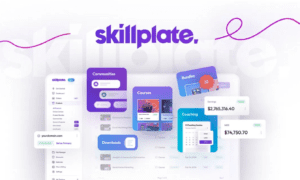The digital world never stays the same for long. Especially after the advent of AI, the landscape is changing almost every day.
The most significant change in SEO and content marketing is AI overviews (AIO) and answer engines. These have not only created challenges and opportunities, but have also changed our metrics and the way we create content.
That’s why today, I am writing the content to cover the latest SEO and content marketing trends nobody should miss.
Top 6 SEO & content marketing trends
With new technologies, evolving algorithms, and changes in user behavior, businesses that want to stay relevant must consider adopting these trends.
Ignoring them might mean losing visibility, engagement, and ultimately, customers. Let’s dive into each of these essential trends:
1. Prioritizing user experience over keyword optimization
Just stuffing your pages with keywords will not work. As search engines are getting smarter at reading the context of your lines, old-school SEO practices like keyword stuffing are becoming ineffective and in many cases, harmful.
Moreover, more and more search queries are being answered by AI overviews. These tools deliver responses in shorter and highly relevant lines. While they still collect data from SERP results, the need for users to click on individual links has decreased. And this trend will likely continue as AI technology improves.
This is where Solara AI comes in. It helps marketers and businesses adapt to this shift with AI-driven strategies that focus on Answer Engine Optimization (AEO) and smarter SEO practices. Instead of relying on outdated keyword tactics, Solara AI helps create content that directly answers user intent, improving visibility in zero-click search results like FAQs, featured snippets, and AI summaries.
2. Changing your expectations from traffic to conversions
As AIO (AI-generated) answers many queries within a few lines and includes references, only users who need detailed information will click the websites ranked below AIOs.
This means the focus should no longer be just on getting traffic through keywords or generic search queries that’s going to decrease. Instead, we need to shift from traffic-based goals to conversion-driven SEO and content. This requires a change in mindset, especially for those who have always measured success in clicks and impressions.
For example, instead of writing a generic post on “Email Marketing Basics,” you can create targeted, comparison-based content such as the best free SMTP providers.
This helps readers choose the most reliable option for sending transactional and marketing emails. Such content attracts businesses or marketers actively looking for solutions, increasing your chances of conversion.
For example, instead of writing a general blog post like “What is digital marketing?”, create a guide titled “Digital Marketing Tips for Small Businesses to Boost ROI in 2025.” This targets a specific group and moves them down the funnel faster.
3. Creating higher-quality content with generative AI tools
Low-quality content is not going to work anymore, even if it’s relevant. Because AI has raised the bar so high. It helps create marketing content faster than ever.
But just creating more content is not the answer. To speed up the writing process, it’s still essential to write good sentences, edit them, personalize them, and check for inconsistencies in that content. As AI handles most of the groundwork, your effort should focus on making the content truly valuable and authentic.
In simple words, you need to make your content stand out. Use AI for speed and ideas, while your job is to use your creativity to make it better. Just like 88% of marketers globally, who are already using generative tools not to replace humans, but to enhance the human touch in their content. Tools like Venngage allow marketers to create AI-powered infographics, reports, and visuals that complement written content, making it more engaging and SEO-friendly.
For example, tools like ChatGPT or Jasper can draft an outline, but the real value comes from your personal voice, stories, or industry insights. Content that feels robotic will likely be ignored — both by readers and search engines.
4. Short-form videos are taking over the internet
Visual content is dominating the world. It accounts for more than 82% of all internet traffic. Plus, with TikTok, Instagram reels, and YouTube shorts growing rapidly, users now prefer consuming information in 30 to 60 seconds.
This rise in short-form video content is more than just a trend — it’s a reflection of changing attention spans and content preferences.
Brands that adopt short-form videos in their content marketing strategies will have an advantage. You don’t need a fancy studio or a professional videographer. Even simple videos filmed on a phone, if they are engaging and valuable, can go viral.
Google also prioritizes content that has interactive elements in it, like images, graphs, and videos, especially the ones uploaded on YouTube (rather than Vimeo or Dailymotion). This is because YouTube is owned by Google, and integrated better in SERPs.
So, if you want your written content to rank better, pair it with a relevant YouTube short or a product video — and watch your engagement improve.
5. Demonstrating first-hand experience in content
One of the most important SEO trends and techniques is proving your expertise with first-hand experience.
As Google’s E.E.A.T. (Experience, Expertise, Authoritativeness, and Trustworthiness) update rewards content that reflects real experience, not just theoretical knowledge. Moreover, AI does not have any experience, so demonstrating your expertise will signal both search engines and users that you are an authority in your niche.
6. Using social media as a search engine
Social media is no longer just for scrolling — it has become a major search engine itself.
A study has found that 78% of Gen Z prefers searching on social media rather than Google. This shift is shaping global content marketing trends, pushing brands — even those offering digital banking solutions, to optimize their posts, hashtags, and profiles for search visibility.
Think of Instagram captions with keywords, TikTok bios with niche hashtags, or Pinterest boards with trending search terms.
Being discoverable on social platforms will be as important as traditional SEO. They are even interconnected. Social signals from social media brand mentions, hashtags, and user-generated content signals search engines to consider ranking you higher.
So, it’s time to think of SEO as more than Google — it includes TikTok, LinkedIn, Reddit, YouTube, Pinterest, and even Quora.
Conclusion
Staying ahead in the digital marketing world demands more than following old techniques.
From shifting your focus to conversions, creating better content with AI, making short-form videos, to embracing hyper-personalization, you need to evolve with the latest seo trends and latest content marketing trends.



































